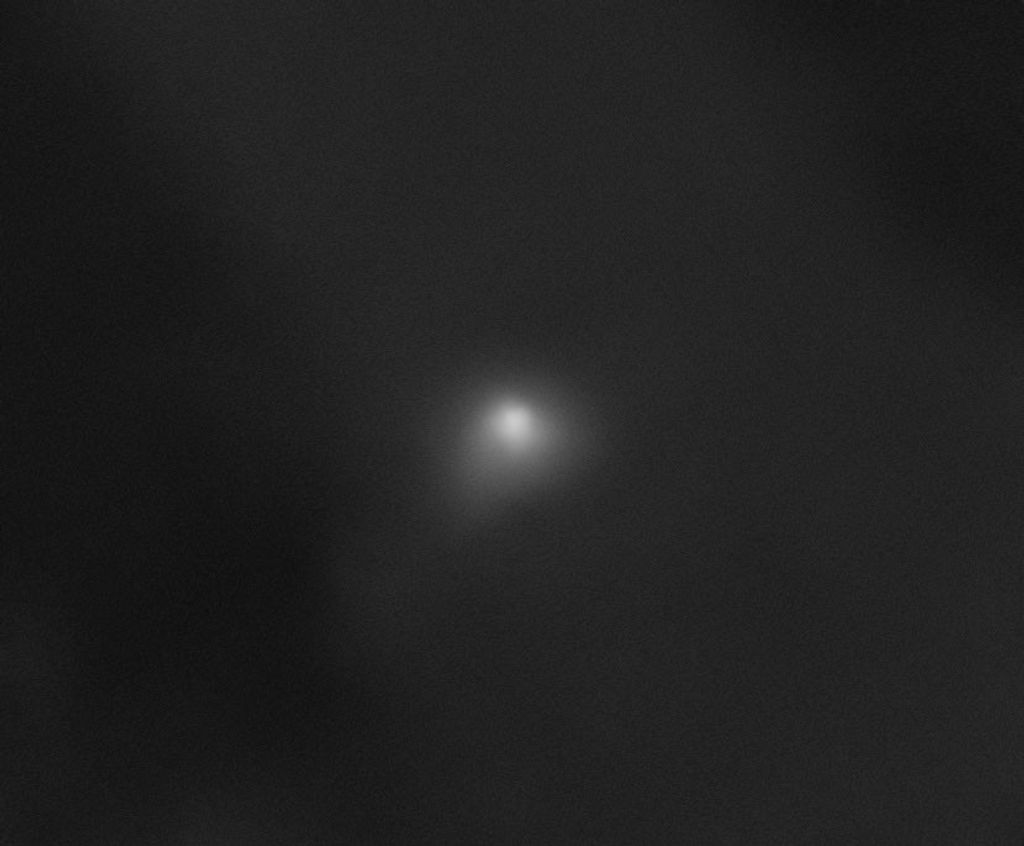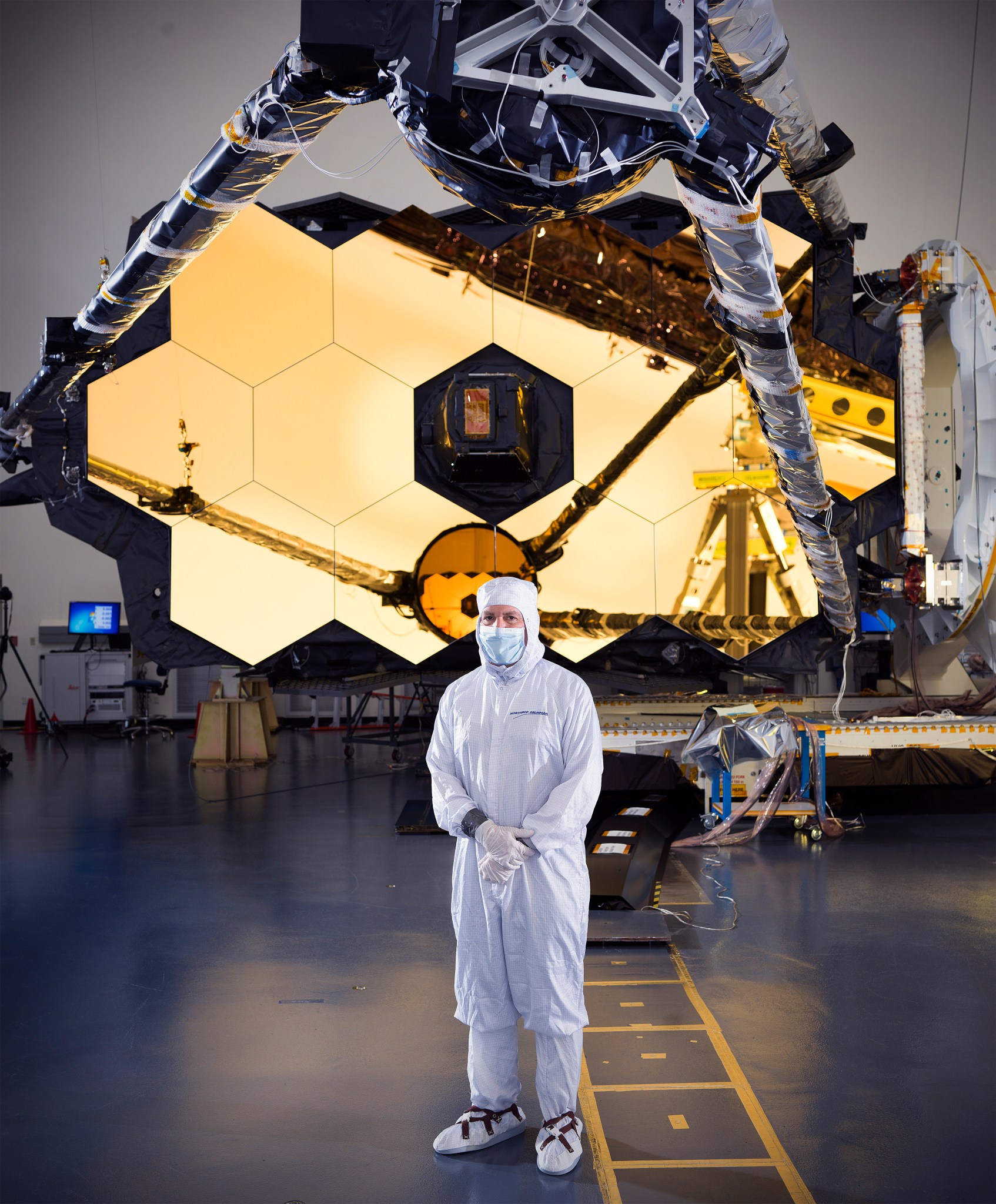Name: Lee Feinberg
Title: James Webb Space Telescope Manager
Formal Job Classification: Senior Engineer
Organization: Code 550, Instrument Systems and Technology Division, Engineering Directorate
What do you do and what is most interesting about your role here at Goddard? How do you help support Goddard’s mission?
I spend most of my time on the James Webb Space Telescope. I have worked on Webb for 20 years, most of that time as the Optical Telescope Element manager.
My thing is space telescopes, so I support a number of other space telescopes including review panels for the Roman Space Telescope and Laser Interferometer Space Antenna (LISA) and technology and architecture development for potential future ones like the Large Ultra-violet Optical InfraRed (LUVOIR).
I also am increasingly working on quantum technologies and quantum communications, which are fascinating. The hope is we can eventually use quantum technologies in telescopes.
What was your first job?
I am the son of a veterinarian. My first job was cleaning kennels and holding dogs in the animal hospital. Since we lived on top of my dad’s hospital, I was working there since I was 4 years old.
How did you go from kennel help to engineering?
In my case, my dad started a company that wrote software to manage animal hospitals. While I was in high school, I helped him. And then I became an engineer. In college, my programming skills and optics major got me a job at the Laboratory for Laser Energetics (a laser fusion facility), which really launched me.
What is your educational background?
I am from Westchester County, New York. I have a Bachelor of Science in optics from the University of Rochester. I chose Rochester in part because of the optics program and in part because the Eastman School of Music is there, and I wanted to take music classes and be around musicians. I spent a lot of time playing in bands, but I only took one class because they were more classical than jazz and blues, which are my musical interest. I have a master’s in applied physics from Johns Hopkins University, which I got after I came to Goddard.
How did you come to Goddard some 29 years ago?
I was working at Ford Aerospace on the ground system for the Hubble Space Telescope when it launched in 1990.
When NASA realized Hubble had an optics problem, NASA hired me to help with the first Hubble Space Telescope servicing mission, SM1. I think I was the youngest engineer on SM1. For the next three years, I helped figure out the right prescription for the optical correction and tested the corrective optics. Hubble SM1 launched in December 1993.
What did you do after the first Hubble servicing mission?
In early 1994, I became the Space Telescope Imagining Spectrograph (STIS) instrument manager for the Hubble’s second servicing mission. We designed and built a major instrument upgrade that made Hubble’s telescope much more powerful. STIS launched in 1997.
What other work did you do for Hubble?
I helped start two other Hubble instruments, the Wide Field Camera 3 and the Cosmic Origins Spectrograph.
Please tell us about your work in micro electromechanical systems (MEMS)?
After Hubble, I became the first assistant chief for technology in the Instrument Systems Division. Each engineering division created this new job. I helped develop technologies in our division including our first work in MEMS, which are little, tiny actuators, or motors, that are the diameter of a human hair. We are actually flying them on Webb as micro shutters to open and close.
Why did you leave Goddard to join a startup company?
At that time, it was the golden age of optics for optical communications in startup companies. My real dream was to be a musician, a jazz and blues pianist, so I wanted to make enough money to support myself.
I was working at this startup when 9/11 happened. It soon became obvious that the startup company was not going to do what I was hoping. In December 2001, I called Bernie Seery, who was the project manager of a new mission called the Next Generation Space Telescope, which became the James Webb Space Telescope. I thought he would want me to lead the instruments but he asked me to become the telescope manager. So in January 2002, I became the telescope lead for James Webb.
What was most interesting about being the James Webb telescope lead? What did you learn?
Early on, we had to develop all of the technology. Many people did not even think this was possible. I did not actually know if it was possible. It was a very exciting time. We tried a lot of different things, tried a lot of different ideas.
One of the biggest deals was when I co-led the selection of beryllium over the traditional choice of glass for the mirrors. We did a lot of testing and a lot of what we did was figure out how to test. That started an eight-year effort to manufacture and test the mirrors and actuators all over the country, it was quite an experience.
When I mentor, I tell people at NASA you don’t start thinking you can do something. You start thinking you might be able to do something.
What was your other big contribution to Webb? What did you learn?
I co-led the final testing of the telescope and instruments at NASA’s Johnson Space Center in Houston, which happened over Hurricane Harvey. It took us a month to cool down the telescope enough to test, and then Harvey struck. It was a huge deal, and the hurricane hung around for almost a week. We had people sleep over, guarding the telescope, and we focused on human and telescope safety. Amazingly, the first time we ever aligned the primary mirror at temperature was right at the beginning the hurricane. In the end, everything worked out and we successfully finished the test.
I tell people that sometimes you have to do things you did not sign up for to do something significant. When you work on a big project, it is not a job. It is a passion and a commitment. It is a way of life.
What do you remember most from Hubble?
When we got the first servicing mission hardware in space, and it worked, and they sent down the first images and they were crisp, it was the greatest feeling. It was worth all the sacrifice.
On Hubble, we worked crazy hours. I once worked for six months, 12 hours a day, without a day off. We did not see it as a question of how many hours we were working; we were just committed to making Hubble work. It was not a job; it was a goal, a passion.
James Webb has a lot of creative people. Are these people creative outside of Goddard?
Yes. In fact, for about 20 years, some of us played in a band called “Outta Scope.” We were eclectic, playing everything including jazz, funk, blues and rock. John McCloskey, the lead engineer for electrical noise, played guitar. Early on, we also had a trumpet player from Webb.
Please tell us about your current role on Webb as a technical trouble shooter?
Right now I am leading the wavefront portion of commissioning which is where we align the telescope. The mirrors have to go from millimeters out of alignment to nanometers using only the main science camera as an optical sensor. We worked out the algorithms almost 20 years ago and tested them on a testbed but now we will finally execute them. It takes about three months to fully align the telescope, although part of that time is just waiting for things to stabilize at cold temperatures. We can’t go any faster than physics let us unfortunately.
What makes you excited for the future?
Quantum technologies like quantum communications. I am helping on quantum communications and quantum optics, which offers some really exciting possibilities.
Quantum computing is a new type of technology that does not use binary logic. It uses quantum physics to develop technologies that go behind binary logic and beyond classical semiconductor systems by using quantum logic and quantum physics. It is a whole new technology that can be orders of magnitude more powerful. Quantum technology could have the same impact as the transistor in enabling us to do things we never did before.
Quantum communications will help us link quantum computers to create the quantum internet. We may be able to apply similar types of technologies to telescopes to make them more powerful, which really fascinates me.
What have you invented?
I have several patents but my best ideas were designs and architectures. Maybe my best idea was coming up with the “cup up” test that we used to test Webb which flipped the telescope over and really simplified things to make it feasible. Another one was the idea to use a circular folding architecture for LUVOIR, which helps us fit a larger telescope in a shroud. I guess architects don’t invent as much design.
What are some of your honors and awards?
I am a Goddard senior fellow, a fellow of the Society of Photo-optical Instrumentation Engineers, and I am an associate editor for the Journal for Astronomical Telescopes and Instrument Systems.
If you were not an engineer, what would you be?
I would love to be a full-time musician. Maybe I will, still, one day. I am playing in a blues band called the Allman Others, and we play music by the Allman Brothers, and a unique band called honeyfunk that combines funk and bluegrass. Both are pretty successful, playing clubs in D.C. and Maryland.
I also write music. I wrote for Outta Scope, and we have a CD.
My two favorite things are writing and improvising. I play a lot of different styles. I love it all.
What is your “six-word memoir”? A six-word memoir describes something in just six words.
Father. Husband. Keyboardist. Telescope-builder. Friend.
Conversations With Goddard is a collection of question and answer profiles highlighting the breadth and depth of NASA’s Goddard Space Flight Center’s talented and diverse workforce. The Conversations have been published twice a month since May 2011 and are archived on the NASA Goddard homepage under the People tab.
By Elizabeth M. Jarrell
NASA’s Goddard Space Flight Center




























